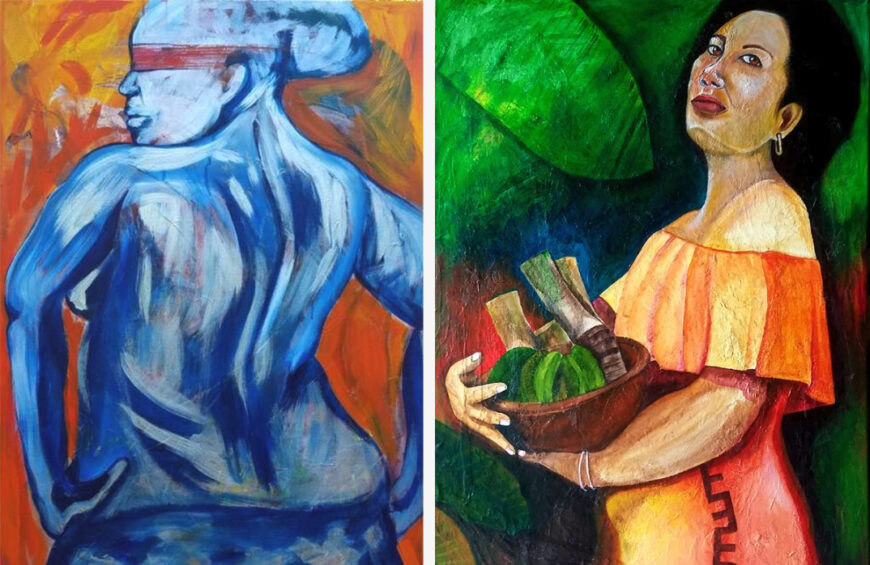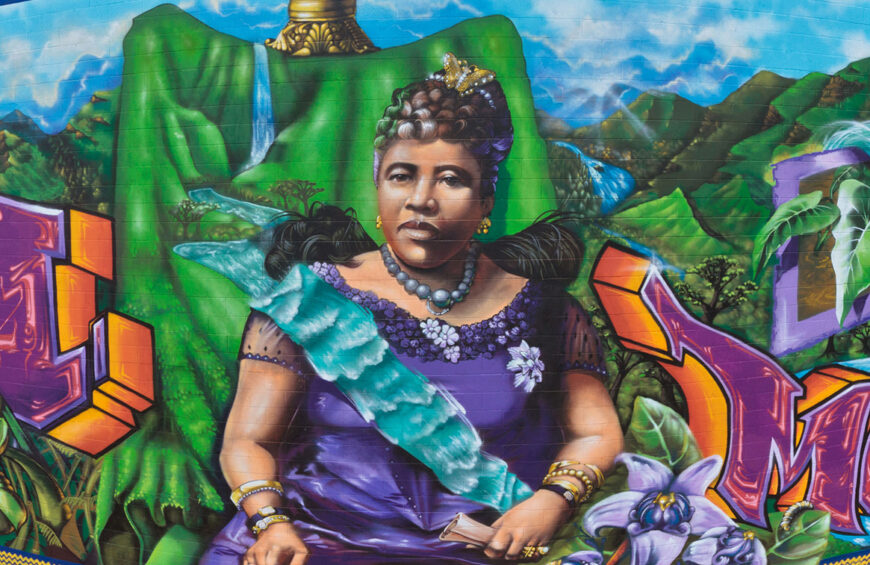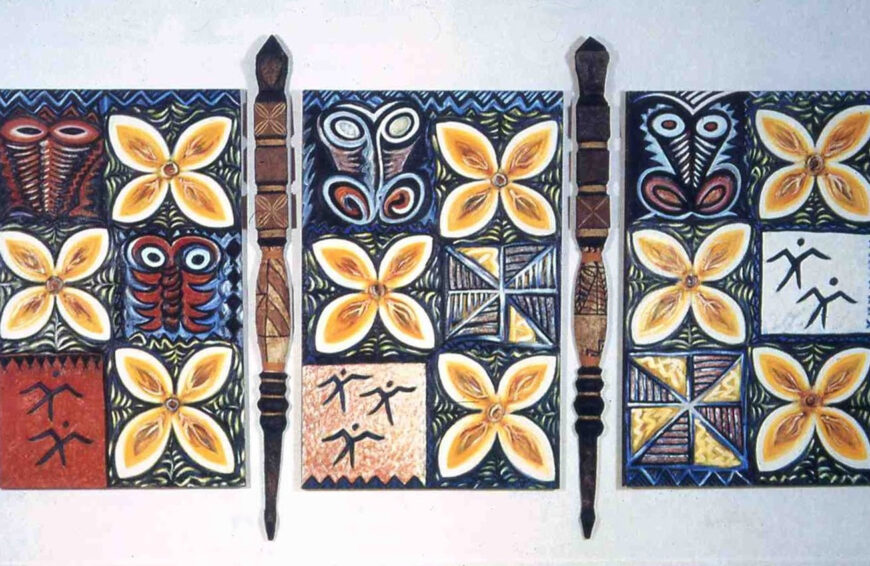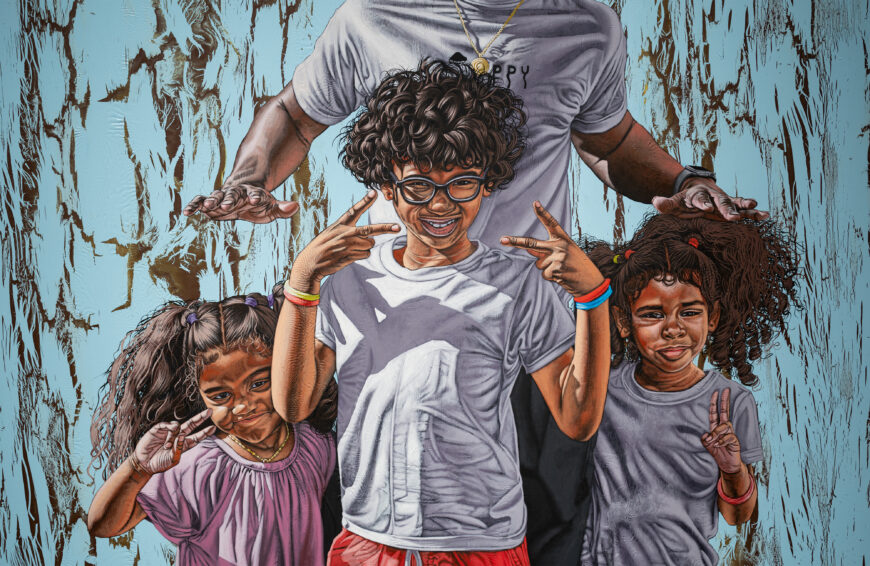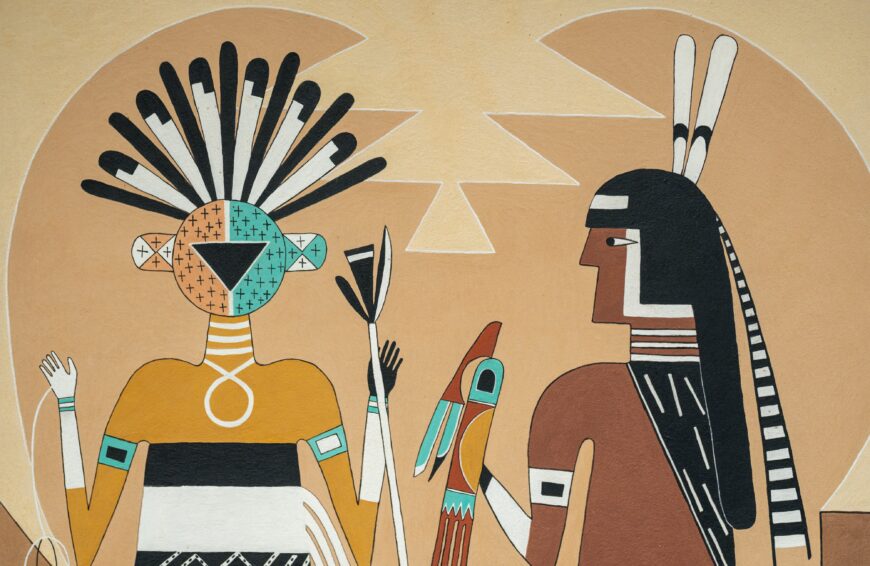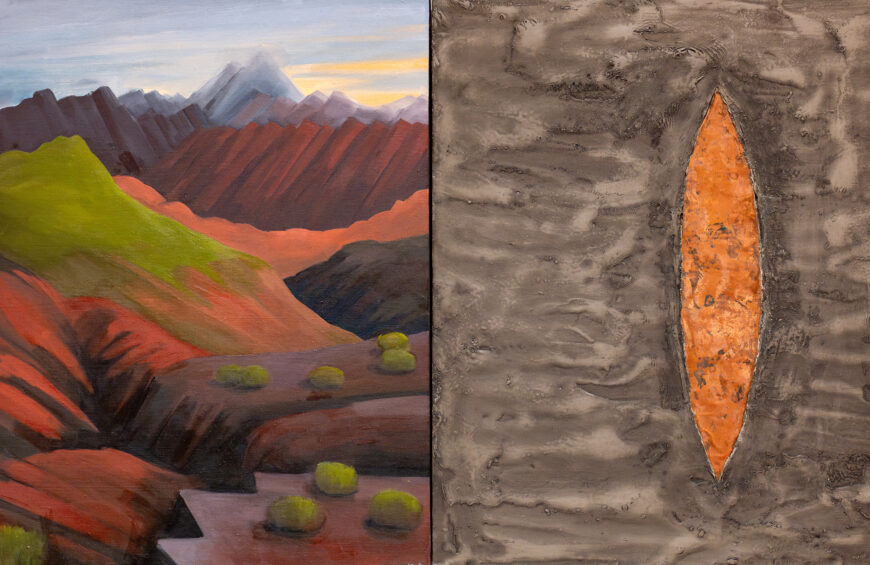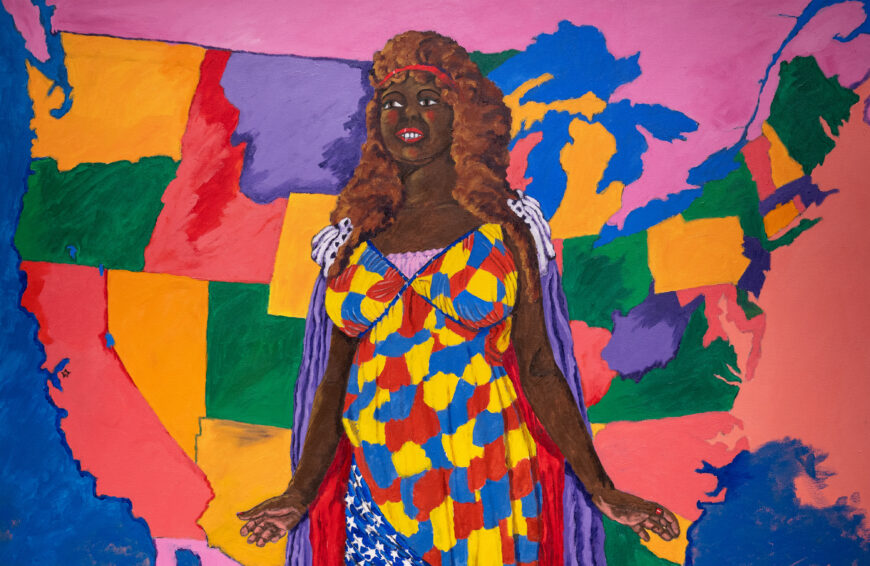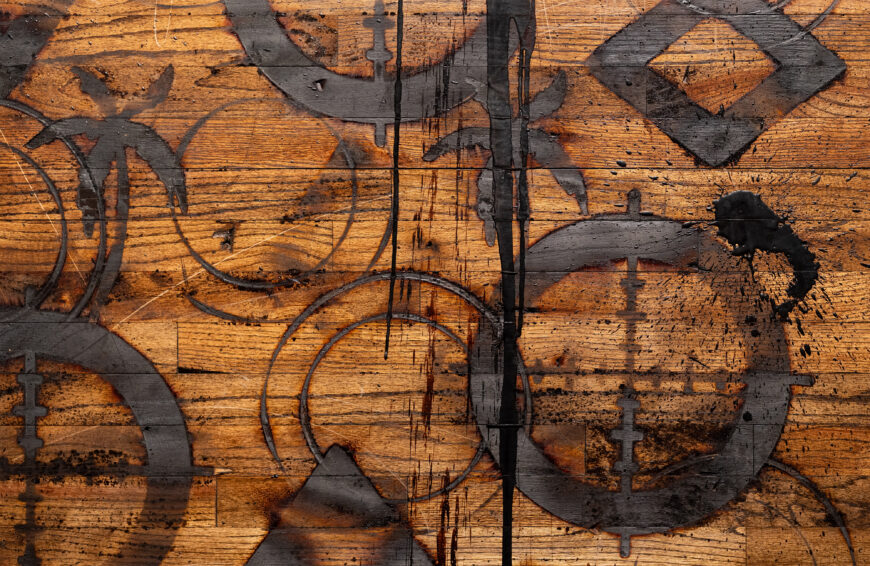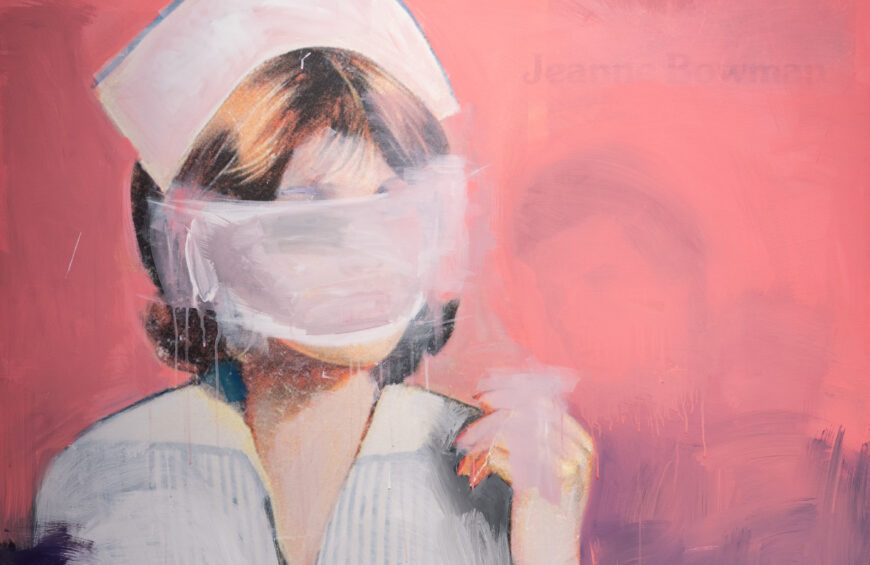Teraoka draws on Japan’s brilliant history of art and kabuki theatre to creating beauty from heart-rending tragedy.
Masami Teraoka, American Kabuki (Oishiiwa), 1986, watercolor and sumi ink on paper mounted on a four-panel screen, 196.9 x 393.7 x 3 cm (de Young Museum, Fine Arts Museums of San Francisco), © Masami Teraoka. Seeing America video. Speakers: Emma Acker, Associate Curator of American Art, Fine Arts Museums of San Francisco and Steven Zucker
[0:00] [music]
Dr. Steven Zucker: [0:05] We’re in the Photography Studio in the de Young Museum, part of the Fine Arts Museums of San Francisco, looking at a Japanese screen, but this screen is from the late 20th century.
Emma Acker: [0:17] By a Japanese American artist named Masami Teraoka.
Dr. Zucker: [0:21] What this screen does so well is to mix both Japanese and American cultural traditions.
Emma: [0:27] Here, Teraoka is addressing this burning topic of his day, the AIDS pandemic that in 1986 was at its height.
Dr. Zucker: [0:36] It’s hard for us to remember just how terrifying this moment was. By the time we get to 1986, tens of thousands of people had died, and there was almost no political will in Washington to confront and address this pandemic.
Emma: [0:50] Masami Teraoka was inspired to create this work by the story of a friend who confided in him that her infant had contracted AIDS through a blood transfusion.
[1:02] This became the springboard for Teraoka to universalize and humanize this, at the time, highly politicized crisis. He talked about wanting to confront the universality of this issue, to show that it was a global health crisis that affected people from all walks of life. He takes this highly personal, individual tragedy and opens it out onto these much larger social and political issues.
Dr. Zucker: [1:31] He brings to bear a full arsenal of Japanese art history to tell this story.
Emma: [1:37] It’s this very traditional four-panel folding screen format. It draws on the tradition of woodblock prints, ukiyo-e, from Edo-period Japan. The title “American Kabuki,” Kabuki refers to a traditional theatrical form that was widely accessible and popular. Kabuki incorporated both overt erotic content and sometimes very covert political content.
Dr. Zucker: [2:03] That’s because Kabuki theater was highly censored. Representing contemporary events had been outlawed, and so people used historical events to refer to contemporary corruption and other stories that needed to be told.
[2:16] But any sense of sensuality has been overwhelmed by the sense of tragedy, of frantic terror that we see in the woman’s face. She clutches her child. You can just make out the back of the child’s head and her wild despair.
Emma: [2:30] Look at her windblown hair, her hollow-eyed stare. These nebulous forms that represent the spirits of deceased AIDS victims mirror the forms of her hair. She rises up out of this surging wave.
Dr. Zucker: [2:45] The crests of the waves are almost like fingers that want to pull her down.
Emma: [2:50] You can almost see the waves as skeletal fingers of death. The artist actually referred to them as “creeping fingers.” We think of artistic precedents and inspirations, Hokusai’s “The Great Wave,” which shows this tiny boat that’s about to capsize. Here, the wave represents this tidal force, this tsunami of destructive energy that the AIDS epidemic was wreaking on the world stage.
[3:17] Look at her blackened teeth. This was a convention for showing that a woman was married in the Edo period. But here, it takes on darker associations when combined with the lesions that we see on her forearm, and her forehead, and her cheek, which show that she’s already suffering from the symptoms of AIDS.
Dr. Zucker: [3:36] In Kabuki theater, that green-blue eye shadow is a representation of the ghostly, of fear, and so he’s drawing on these symbols that are 200 years old. Even the calligraphy is based on a historical calligraphy that was used in advertisements for Kabuki plays.
[3:55] We have the large narrative that unfolds before us, but we have it also in microcosm, in the lower-right corner, where we see a frigate bird who seems like he’s about to attack two mating fish just below. Here, this black bird seems so menacing.
Emma: [4:09] Frigate birds are known for stealing fish from the mouths of other birds. You could say in a sense that this bird represents the stealing or the extinction of life. There’s this tension between the cycles of life and fertility, represented by the fish, and then this menacing, predatory bird.
[4:29] I think this is mirrored in the conflict between this very luminous full moon, which the artist said for him was a symbol of hope and of the cycles of life and rebirth, but it’s overshadowed by these menacing black storm clouds that dominate the horizon.
Dr. Zucker: [4:46] I’m taken with the calligraphic, almost signature-like lines that define the folds of her kimono. Throughout this image we have this confrontation between beauty and tragedy.
Emma: [4:58] You almost have the sense that you’re watching a blockbuster movie, with the central drama unfolding before your eyes.
[5:04] The inscription paints a beautiful picture of the scene. “In the evening, the clouds are very turbulent, storm-bearing. The sound of the waves is loud and black clouds are beginning to spread over the shoreline. As the evening wears on, the full moon is revealed by the parting of the clouds. Suddenly, a cry is heard, ‘Help us! Help us!’ It is so faint that the audience is uncertain whether they have heard a voice or if it is only the sound of the waves.”
[5:35] [music]



